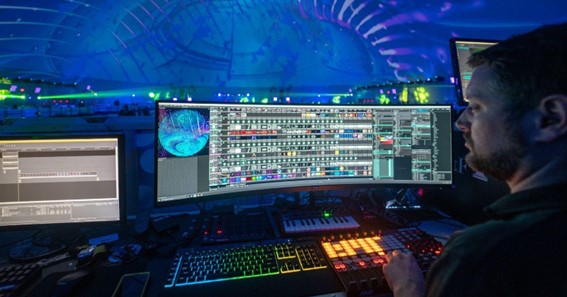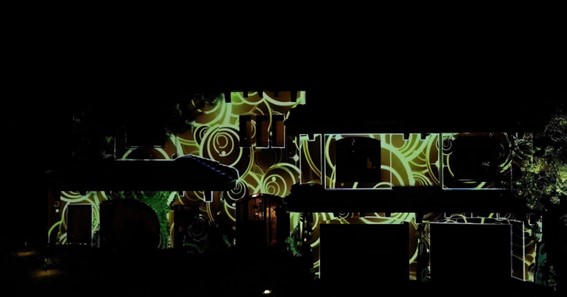Projection mapping, also known as video mapping or augmented spatial reality, is a quickly growing audiovisual tool with seemingly endless possibilities. It combines technology and creativity to bring spaces to life through projection techniques, including buildings, entire rooms, domes, and even 3D objects. Thus allowing designers, musicians, and performers to create larger-than-life experiences that captivate audiences in unique ways. With its recent rise in popularity thanks to advancements in computer programming and visualization tools, there are few limits regarding what can be accomplished using this exciting technique. Whether you’re looking for a dramatic backdrop at your corporate event or an awe-inspiring start for a live show, understanding the power of projection mapping is essential knowledge in today’s media landscape.
Projection Mapping on a Building by Lumen and Forge
What is projection mapping and how does it work?
Projection mapping is a technology that displays two-dimensional (2D) or three-dimensional (3D) projections on any surface, creating an interactive digital experience for viewers. Through the use of specialized software, a projector transforms surfaces into dynamic video displays with carefully orchestrated images and videos. This technique can be used to generate realistic simulations of physical spaces or to create unbelievable optical illusions. Typically, this process involves projecting onto building facades and other objects to produce spectacular visuals that capture the attention of an audience. The artwork is then mapped in 3D using projection software which enables it to move around objects, become part of the object itself and even conform to irregularly shaped objects. Although projection mapping requires careful programming and a significant amount of technical expertise, its possibilities are virtually endless.
Uses for projection mapping
Projection mapping is incredibly versatile and can be used for virtually any application. Commonly seen projected on buildings, projection mapping can also be used in interactive art installations, live mural projections during concerts, or for immersive events. It’s also gaining ground as a medium for business and marketing activations worldwide. Inventive use of this technology engages the audience while creating scenes best described as “indescribable.” As it becomes more accessible and easier to manipulate, its applications will only get more creative and inspiring.

Projection Mapping of the World’s Largest Projection Dome at Miami Super Bowl by Lumen and Forge
Benefits of projection mapping
Whether you are creating an event, such as a concert or presentation, or looking for an engaging advertising campaign, projection mapping is the perfect solution. It offers a truly interactive approach to branding and marketing that captures audiences in real-time and allows businesses to assume creative control of their messaging. Projection mapping also offers endless potential for customization so businesses can create custom visuals and patterns with precisely placed media that are fully optimized to bring their message alive on any surface. Moreover, with low cost, easy setup, no smoke or mess involved, and the capacity for multiple projectors running simultaneously, this new exciting technology has pushed the boundaries of standard display design. Projection mapping can help increase a business’s brand awareness through enticing displays. Lastly, projection mapping goes beyond traditional marketing channels by
Tips for creating a successful projection mapping project
Projection mapping can be an incredible addition to any celebration, event, or display. Creating a successful projection mapping project requires careful planning, starting with selecting the right projector and software. You want to make sure that you are choosing powerful equipment that is capable of producing bright enough images for your display. Additionally, it is important to take into account the amount of space available for the projector setup. It is important to note that the initial costs of acquiring the projection system and software can be an investment, especially for one-off events. Working with a company that specializes in projection mapping, like Lumen and Forge, can significantly reduce costs while also providing you the assurance that everything runs smoothly and looks vibrant. They can even help you create customized content tailored specifically to your event goals. Ultimately, investing in professional lighting and sound systems to go along with your hardware selection will help make your display shine.
